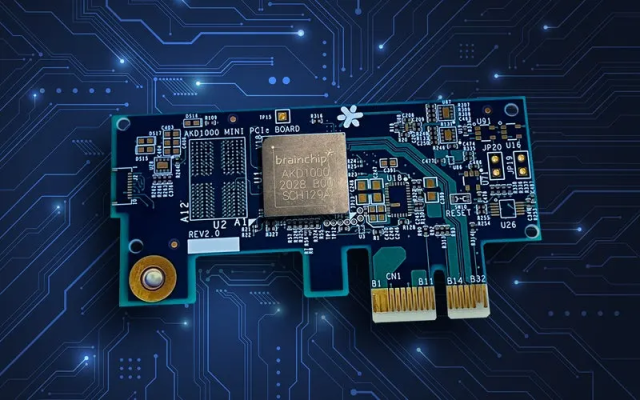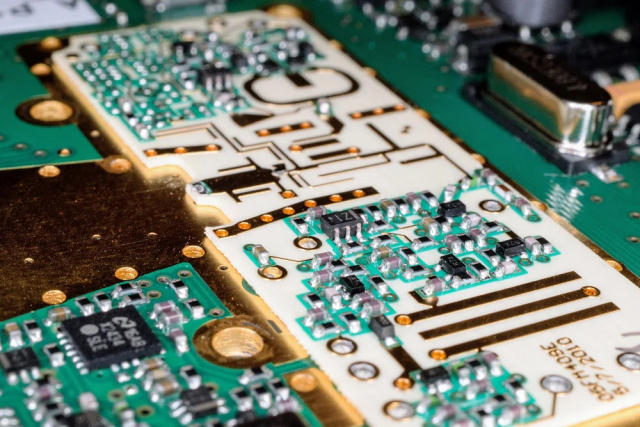1. Engineering Overview
Modern aerospace RF communication equipment, including satellite transceivers and spaceborne antenna modules, demands ultra-low-loss PTFE PCBs with tight dielectric uniformity and precise manufacturing tolerances. Small variations in Dk or CTE can lead to phase drift, impedance mismatch, and degraded link margin in Ku/Ka-band RF payloads.
PTFE PCB laminates, with Dk = 2.1 ± 0.02 and Df = 0.0008 @10GHz, provide consistent dielectric properties under extreme thermal cycling (–55°C to +125°C) and vacuum conditions. KKPCB’s hybrid stackup and controlled lamination ensure high-frequency signal integrity, phase stability, and long-term operational reliability.

2. Core Engineering Challenges
| Challenge | Root Cause | Engineering Impact |
|---|---|---|
| Impedance variation under thermal stress | PTFE expansion and CTE mismatch | Reflection, S-parameter distortion |
| Phase instability across RF channels | Dielectric inhomogeneity | Beamforming errors, signal coherence loss |
| Conductor loss at high GHz | Copper surface roughness | Reduced RF gain, insertion loss increase |
| Environmental stress | Vacuum, radiation exposure | Material outgassing, dielectric degradation |
These effects are particularly critical for compact aerospace RF modules, where phase deviation >1° or impedance mismatch >±3% can compromise antenna array performance and communication link reliability.
3. Material Science and Dielectric Performance of PTFE PCB
| Property | Typical Value | Engineering Benefit |
|---|---|---|
| Dielectric Constant (Dk) | 2.1 ± 0.02 | Stable impedance for multi-band RF lines |
| Dissipation Factor (Df) | 0.0008 @10 GHz | Minimal insertion loss for high-frequency channels |
| CTE (X/Y) | 20 ppm/°C | Maintains multilayer alignment during thermal cycling |
| Moisture Absorption | <0.02% | Preserves phase consistency in humid or vacuum conditions |
| Thermal Conductivity | 0.24 W/m·K | Effective heat dissipation from RF amplifiers |
PTFE PCBs provide superior dielectric uniformity and mechanical stability compared with conventional FR-4 or hybrid substrates, critical for aerospace-grade RF performance.

4. KKPCB Engineering Approach
1️⃣ Hybrid Stackup Design: 6-layer RF stackup combining PTFE cores with low-loss FR-408 HR support layers.
2️⃣ Controlled Lamination: Vacuum-assisted lamination with ±5 μm dielectric thickness tolerance ensures uniform layer alignment.
3️⃣ Copper Optimization: Rolled copper with Ra <0.8 µm minimizes conductor loss; calibration traces embedded for inline TDR verification.
4️⃣ Simulation & Testing: HFSS microstrip/stripline impedance tuning, ADS verification, TDR phase linearity <0.7°, VNA insertion loss <0.3 dB/in.
5️⃣ Thermal Management: Optimized thermal vias reduce hot spots by 5–6°C during continuous high-power RF operation.
5. Case Study — Aerospace Ku/Ka-Band Transceiver PCB
Client & Context: A European aerospace OEM required a PTFE-based PCB for satellite transceiver modules with multi-beam antenna arrays.
Engineering Problem: Previous FR-4/PTFE hybrid designs showed ±5% impedance variation and phase ripple >2°, causing beam-steering errors.
-
Adopted PTFE PCB cores (0.508 mm) for signal layers
-
Hybrid 6-layer stackup with controlled copper roughness
-
Vacuum lamination with ±5 μm tolerance
-
Inline TDR calibration for impedance and phase verification
| Parameter | Target | KKPCB Result |
|---|---|---|
| Impedance Variation | ±5% | ±2% |
| Insertion Loss @ 20 GHz | <0.35 dB/in | 0.28 dB/in |
| Phase Deviation | <1° | 0.6° |
| Return Loss (S11) | < –15 dB | –17.0 dB |
Outcome: PTFE PCB design achieved mission-grade RF performance, stable phase linearity, and reliable beamforming under thermal and vacuum stress.
6. Stackup Design & RF Implementation
6-Layer Hybrid Stackup:
-
L1: Top RF signal (PTFE, 0.2 mm)
-
L2: Ground plane
-
L3: Power/Control routing
-
L4: Signal layer (PTFE)
-
L5: Ground plane
-
L6: Bottom control layer (FR-408 HR)
Simulation & Validation:
-
HFSS: Optimized microstrip/stripline impedance, minimized crosstalk
-
ADS: Verified phase linearity <0.7°
-
VNA/TDR: Confirmed insertion loss <0.3 dB/in
Thermal via placement ensured temperature uniformity, reducing local hot spots ~5°C during high-power RF operation.
7. Reliability & Environmental Validation
| Test | Condition | Result |
|---|---|---|
| Thermal Cycling | –55°C ↔ +125°C, 1000 cycles | Phase drift <0.7°, no delamination |
| Vacuum Outgassing | <0.1% TML | Material stable |
| Radiation Exposure | 50 krad | No Dk/Df degradation |
| Solder Reflow | 260°C ×3 cycles | Layer alignment ±10 μm |
These validations confirm long-term signal integrity, phase stability, and impedance control in aerospace RF modules.
8. Engineering Summary
Material Advantage: PTFE PCBs provide low Df, tight Dk tolerance, and precise CTE alignment for high-frequency aerospace RF modules.
KKPCB Capabilities: Hybrid lamination, stackup verification, inline TDR and RF QA, and simulation-based design ensure repeatable high-frequency performance.
Industry Value: Enables satellite communication systems and aerospace RF payloads to achieve mission-critical signal integrity, phase linearity, and thermal reliability.
9. Contact / CTA
KKPCB Aerospace Engineering Team provides high-frequency PTFE PCB manufacturing and RF design validation for satellites, spacecraft, and aerospace communication equipment. Contact us to optimize PTFE PCB stackup, RF simulation, and signal integrity design.

